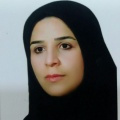| نویسندگان | فرشته جوکارکاشی,پرویز اولیا,محمد علی اموزگار,باقر یخچالی,بهرام کاظمی |
|---|
| همایش | شانزدهمین کنگره بین المللی میکروبشناسی ایران |
|---|
| تاریخ برگزاری همایش | 2015-8-25 |
|---|
| محل برگزاری همایش | تهران |
|---|
| نوع ارائه | سخنرانی |
|---|
| سطح همایش | بین المللی |
|---|
چکیده مقاله
Background and Aim:Saline habitats are globally distributed on Earth and are valuable sources of novel microorganisms. Hypersaline lakes, with salinities at or near saturation are biologically very productive ecosystems. Urmia salt lake is the largest hypersaline lake in Iran.
Methods:Water, soil , sediment and salt samples were taken from the east and western of the lake in July 2012. All samples were collected aseptically and processed within less than 4 h of collection.The contents of various ions were measured Cl-by titration with AgNO3 and Mg2+ by atomic absorption spectrophotometer, Na+ by flame spectrophotometry and Ca2+ by complexometry method using EDTA Prokaryotic diversity was investigated in Urmia Lake by 16S rRNA gene clone library analysis without prior cultivation of the organisms. Total environmental DNA was extracted from water, sediment, salt and soil samples and 1500 bp fragments of the 16S rDNA were amplified with specific primers 27F for bacteria and 21F for Archea and 1492 R for both domains. The purified PCR products were sequenced directionally by ABI 3730XL DNA sequencer at Macrogen (Seoul, South Korea). Sequencing was performed using Sanger’s method.The 16S rDNA gene sequences retrieved in this study have been deposited at Genbank (www.ncbi.nlm.nih.gov), and have accession numbers.
Results: According to the clone libraries the archaeal belonged to 5 genera Halonotius , Halolamina , Haloquadratum, Halomicroarcula ,Halorhabdus. The clone libraries bacterial belonging to 4 phyla (Bacteroidetes, Cyanobacteria , Actinobacteria , Firmicutes ).
Conclusion:The phylogenetic analysis of sequences from Urmia Lake had some common 16S rDNA sequences from other hypersaline lakes previously reported.

